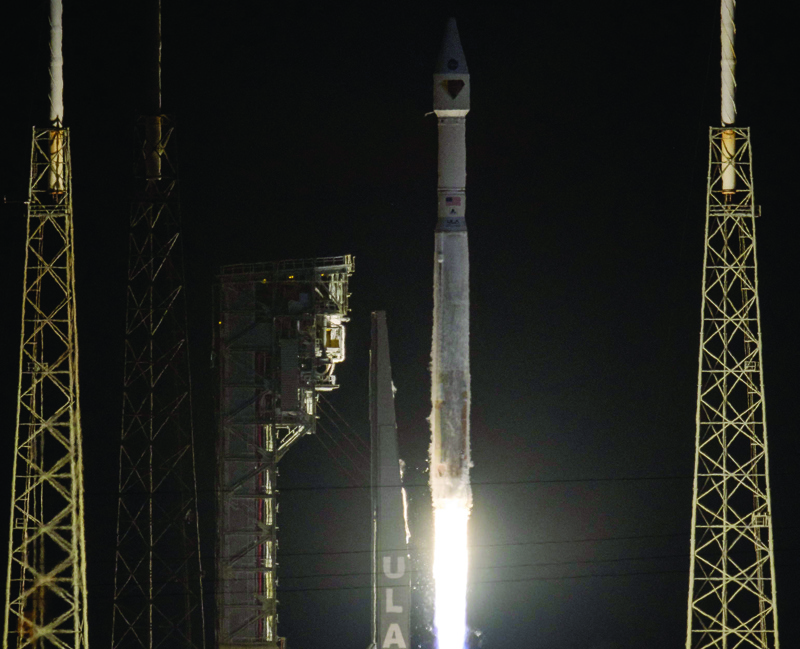 A United Launch Alliance Atlas V rocket with the Lucy spacecraft launches from Space Launch Complex 41 yesterday at Cape Canaveral Space Force Station in Florida. - AFP
A United Launch Alliance Atlas V rocket with the Lucy spacecraft launches from Space Launch Complex 41 yesterday at Cape Canaveral Space Force Station in Florida. - AFPWASHINGTON: NASA launched a spacecraft called Lucy on a 12-year mission to explore Jupiter's Trojan asteroids for the first time yesterday, gathering new insights into the solar system's formation. The Atlas V rocket responsible for propelling the probe took off at 5:34 am local time (0934 GMT) from Cape Canaveral. Named after an ancient fossil of a pre-human ancestor, Lucy will become the first solar-powered spacecraft to venture so far from the Sun, and will observe more asteroids than any probe before it - eight in all.
Lucy will also make three Earth flybys for gravity assists, making it the first spacecraft to return to our planet's vicinity from the outer solar system. "Each one of those asteroids, each one of those pristine samples, provide a part of the story of the solar system, the story of us," Thomas Zurbuchen, associate administrator of NASA's Science Mission, told reporters on a call.
Lucy's first encounter will be in 2025 with asteroid Donaldjohanson in the Main Belt, between Mars and Jupiter. The asteroid is named after the discoverer of the Lucy fossil. Between 2027 and 2033, it will encounter seven Trojan asteroids - five in the swarm that leads Jupiter, and two in the swarm that trails the gas giant. The largest of them is about 95 km in diameter. Lucy will fly by its target objects within 400 km of their surfaces, and use its onboard instruments and large antenna to investigate their geology, including composition, mass, density and volume.
The Jupiter Trojan asteroids, thought to number well over 7,000, are leftover raw materials from the formation of our solar system's giant planets - Jupiter, Saturn, Uranus and Neptune. Scientists believe they hold vital clues about the composition and physical conditions in the protoplanetary disk from which all the Sun's planets, including Earth, formed.
They are broadly grouped into two swarms - the leading swarm is one-sixth a lap ahead of Jupiter while the trailing swarm is one-sixth behind. "One of the really surprising things about the Trojans, when we started to study them from the ground, is how different they are from one another, particularly with their colors," said Hal Levison, the mission's key scientist. Some are gray, while others are red - with the differences indicating how far away from the Sun they might have formed before assuming their present trajectory.
Lucy the fossil was discovered in Ethiopia in 1974 and helped shed light on human evolution. The space mission's name was chosen with the hope that it will shed light on the solar system's evolution. The paleoanthropologists who discovered the hominin remains named her after the Beatles' song "Lucy in the Sky with Diamonds", which they were playing loudly at the expedition camp.
Lucy the probe is carrying a diamond beam splitter into the sky - the Lucy Thermal Emission Spectrometer, which detects far infrared radiation, to map asteroid surface temperatures. By measuring the temperature at different times of day, the team can deduce physical properties such as how much dust, sand or rock is present. - AFP









